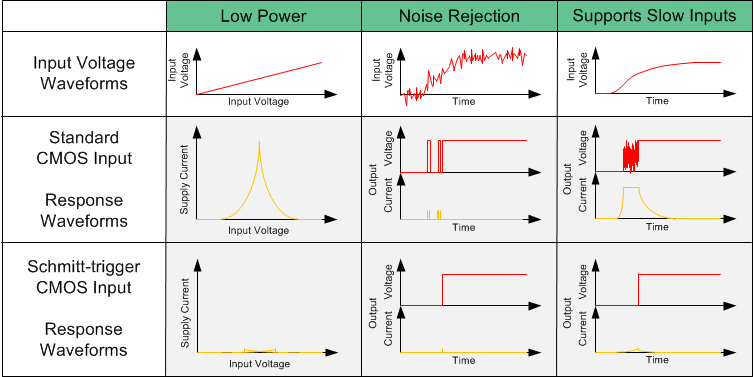SCLS879A January 2022 – October 2022 SN74HCS245
PRODMIX
- 1 Features
- 2 Applications
- 3 Description
- 4 Revision History
- 5 Pin Configuration and Functions
- 6 Specifications
- 7 Parameter Measurement Information
- 8 Detailed Description
- 9 Application and Implementation
- 10Power Supply Recommendations
- 11Layout
- 12Device and Documentation Support
- 13Mechanical, Packaging, and Orderable Information
Package Options
Mechanical Data (Package|Pins)
Thermal pad, mechanical data (Package|Pins)
- RKS|20
Orderable Information
3 Description
The SN74HCS245 is an octal bus transceiver with 3-state outputs and Schmitt-trigger inputs. All eight channels are controlled by the direction (DIR) pin and output enable (OE) pin.
Package Information
| PART NUMBER | PACKAGE(1) | BODY SIZE (NOM) |
|---|---|---|
| SN74HCS245 | RKS (VQFN, 20) | 4.50 mm × 2.50 mm |
| DGS (SOT, 20) | 5.10 mm × 3.00 mm |
(1) For all available packages, see the orderable addendum at the end of the data sheet.
 Benefits of Schmitt-Trigger Inputs
Benefits of Schmitt-Trigger Inputs